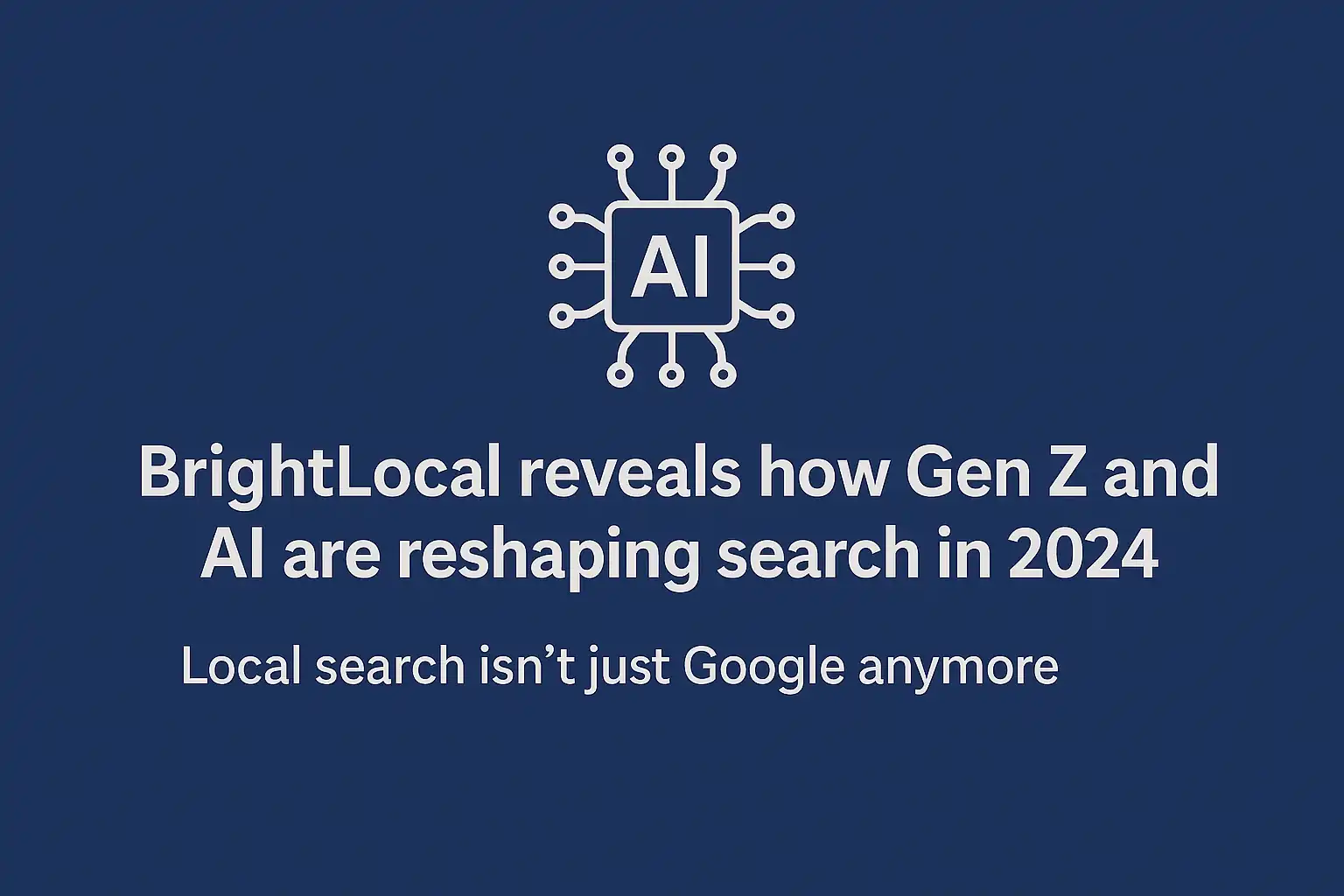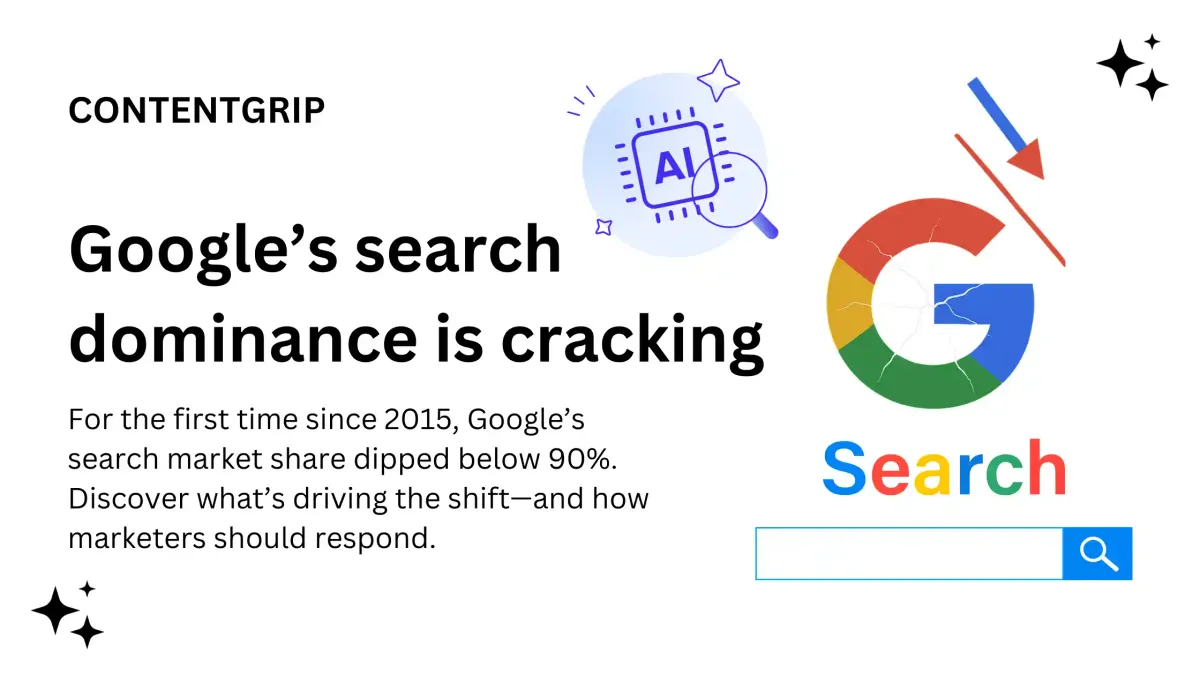BrightLocal: Gen Z is skipping Google and AI is rewriting search
Gen Z is ditching Google, AI is rewriting results, and maps are gaining ground. BrightLocal’s 2024 report explains what’s changing in search.

New research from BrightLocal, a local SEO tools provider, reveals that consumer, especially Gen Z, are moving away from traditional search habits. Instead, they’re using maps, social platforms, and AI tools to discover local businesses.
This article breaks down the key behavioral shifts and what marketers must do to stay visible across all touchpoints.
Short on time?
- Gen Z prefers TikTok and ChatGPT over Google
- 20% of users search directly in map apps
- 40% use AI during search
- Contact info is the top decision factor
- Most users check multiple platforms before choosing a business
Google is losing ground with younger users
Only 49% of Gen Z say they use Google as their default search platform. Ten percent of that group now defaults to ChatGPT. Others go straight to TikTok, Instagram, or other apps. Among older generations, Google’s default use ranges from 62% to 66% (BrightLocal, 2024).
Google still leads overall. When including Safari (which uses Google by default), total usage reaches 70%. But this lead shrinks fast when looking at younger searchers, who are actively breaking away from the standard browser-based path.

Local search often begins inside map apps
Fifteen percent of consumers say they start local searches directly in Google Maps. Five percent say the same for Apple Maps. Combined, map apps account for 20% of default platforms used for local discovery.
Among Millennials, the numbers climb slightly. About 21% default to Google Maps, and 5% use Apple Maps to find businesses nearby. These users search without going through search engines, relying entirely on in-app details like services, reviews, and directions.
Social platforms are now key entry points for Gen Z
Twenty-five percent of Gen Z consumers use social media as their main method for local search. Within this group, 10% prefer TikTok, and 5% use Facebook—making it the only generation where Facebook appears in the top three platforms for local discovery.
Unlike traditional search, these users browse by hashtag, location tags, or influencer content. This signals that social media is not just for branding or engagement. It is where decision-making begins, especially for users under 30.
AI is already influencing search decisions
Forty percent of consumers say they actively use generative AI tools like ChatGPT, Google’s AI Overviews, or Microsoft Copilot to help with searches. Usage is even higher among Gen Z and Millennials.
These tools summarize and repackage search results. That means users might make a decision based on AI-generated content without clicking through to original sources. Businesses that are not cited or structured clearly may be left out entirely, even when ranking well in traditional SEO.
Consumers rely on basic business info before deciding
Eighty-five percent of users say contact information and operating hours are the most important details when researching a business. This ranks higher than price, reviews, or proximity.
Fifty-six percent check that details like address or phone number match across platforms. Nearly half also plan a travel route right after looking up a business. These behaviors show intent to visit quickly. Missing or inconsistent information leads to lost opportunities.
What marketers should prioritize now
1. Optimize for map visibility
Claim and update your listings on Google Maps, Apple Maps, and Bing Places. Include relevant services, updated hours, and high-quality photos. Ensure consistency across platforms to appear in results for both branded and non-branded searches.
2. Prepare your content for AI tools
Use simple language, answer common questions clearly, and structure pages so AI tools can summarize them accurately. Clarity helps both machines and people.
3. Publish location-aware content on social platforms
Focus on short-form videos, reviews, and behind-the-scenes posts. Add location tags and relevant keywords to improve searchability within apps like TikTok and Instagram.
4. Keep all core business information current
Check and correct phone numbers, addresses, links, and opening hours across every touchpoint. Incomplete or outdated details are deal-breakers for over half of local searchers.
Consumers are no longer sticking to one search tool
Seventy-nine percent of users say they use more than one platform when researching a local business. Even those who begin with one source, such as Google, a map app, or TikTok, often cross-check information before deciding.
Discovery, evaluation, and action now span multiple platforms. A business that shows up in only one of those steps risks being forgotten or overlooked entirely.
Source
BrightLocal. (2024). Consumer search behavior: Where are your customers?
https://www.brightlocal.com/research/consumer-search-behavior/



